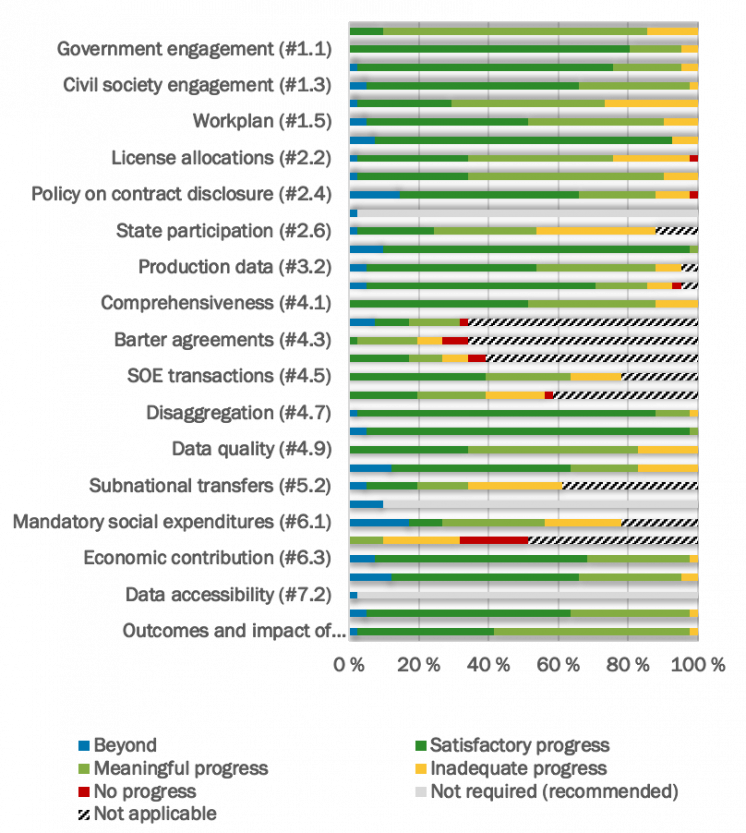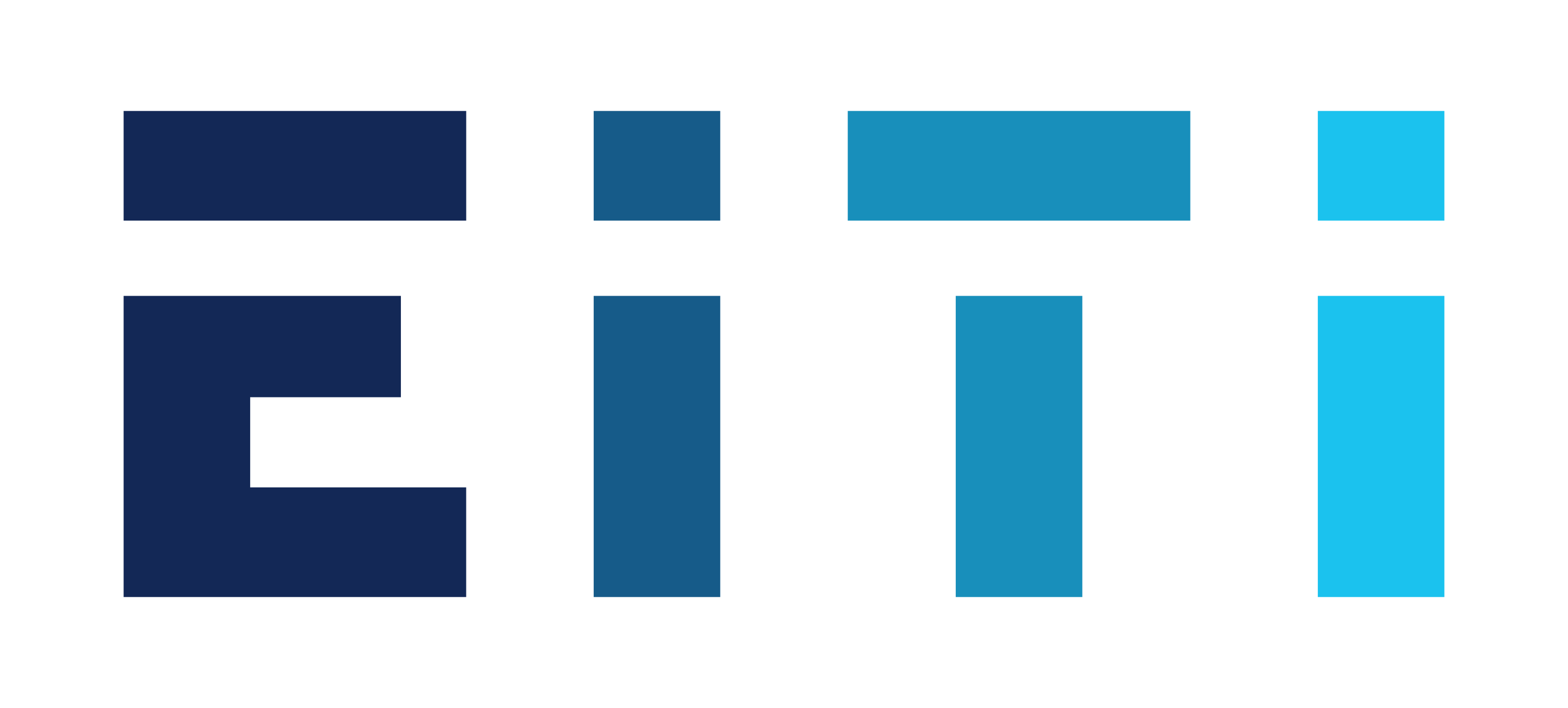
Crunching the numbers on EITI Validation
Crunching the numbers on EITI Validation
What can be learned from three years of Validation results – and how to interrogate the data
EITI Validation results are a rich source of information about the transparency of the extractive sector in EITI implementing countries. Over 80% of EITI countries have completed their first Validation since the process was introduced in 2016, producing a substantial dataset that covers 1,386 individual requirements of the EITI Standard. When compared and examined more closely, this data can give insights into the effectiveness of EITI Validation, as well as the progress countries have made over time.
With new analysis tools, stakeholders can interrogate and interpret these results for themselves. The automated Validation data file, for instance, collates all the Validation results that are published online in open data format, enabling users to dig deeper into the findings. Database searches can cover a range of questions, from the applicability of individual EITI Requirements (indicating the complexity of a given country’s extractive sector), to how well countries are progressing to improve their levels of disclosure, or how well stakeholders are engaged in the process of collecting information, and how this information is used to lay the foundations for improved accountability.

What the data tells us
EITI implementation is challenging
Forty-two Validations have been carried out since 2016, evaluating how countries are progressing in their efforts to meet the 2016 EITI Standard. Of these, 32 countries were found to have made meaningful progress in their first round of Validation, and four made satisfactory progress. But results show that EITI implementation is a learning process and no easy task; six countries were suspended after Validation assessed their implementation as inadequate, and for many multi-stakeholder groups (MSGs), the number of prescribed corrective actions was higher than expected. For these countries, Validation may prove to be a useful diagnostic tool in identifying gaps that would have otherwise been overlooked.
While it is a global standard, the EITI Standard applies differently across countries, depending on how their extractive industries are structured. For example, while all EITI Requirements are relevant in a country with a well-developed sector like Nigeria, a quarter of them are not applicable in Malawi, where the sector is still in a nascent stage. But there have been common challenges across the board for many implementing countries, namely in upholding the requirements that are prerequisites for joining the EITI, such as multi-stakeholder oversight and work planning. Weaknesses in the comprehensiveness and reliability of EITI reporting are also prevalent in too many countries.
Validation is working
Nonetheless, findings from subsequent Validations, which assess progress in addressing the gaps identified in the first round, show promising results. To date, 10 countries have undergone a second Validation. Out of the 100 corrective actions that were identified, 80 were considered to have been fully addressed, demonstrating that countries are refining their disclosure efforts while continuing to do what they do well. While there is evidence of backsliding in some countries, many second Validations reveal progress on addressing shortcomings identified through the process.


The most consistent progress has been on addressing gaps in MSG oversight, followed by disclosures related to production monitoring, revenue allocation and socio-economic contribution. This is an encouraging sign that implementing countries are seeking to address internal governance challenges as a pre-condition for impactful EITI reporting. Yet there is still much room for improvement, particularly with longer-term issues that require reform. These include disclosures related to licensing and contracts, revenue collection and outcomes and impact.
EITI Validation: Where to from here?
The findings provide a helpful starting point to consider whether Validation – the EITI’s quality assurance process – is fit for purpose, and how it can be improved. The EITI Board is set to review the Validation process in the coming months, using the data to inform their assessment and recommendations. In the meantime, stakeholders are encouraged to interrogate the data available through the Validation data file, and contact their representatives on the EITI Board or the International Secretariat with feedback on the findings or the Validation process.
Additional resources:
EITI Validation explained and EITI Validation guide
Validation decisions on EITI implementing countries
EITI openness policy
Related content





